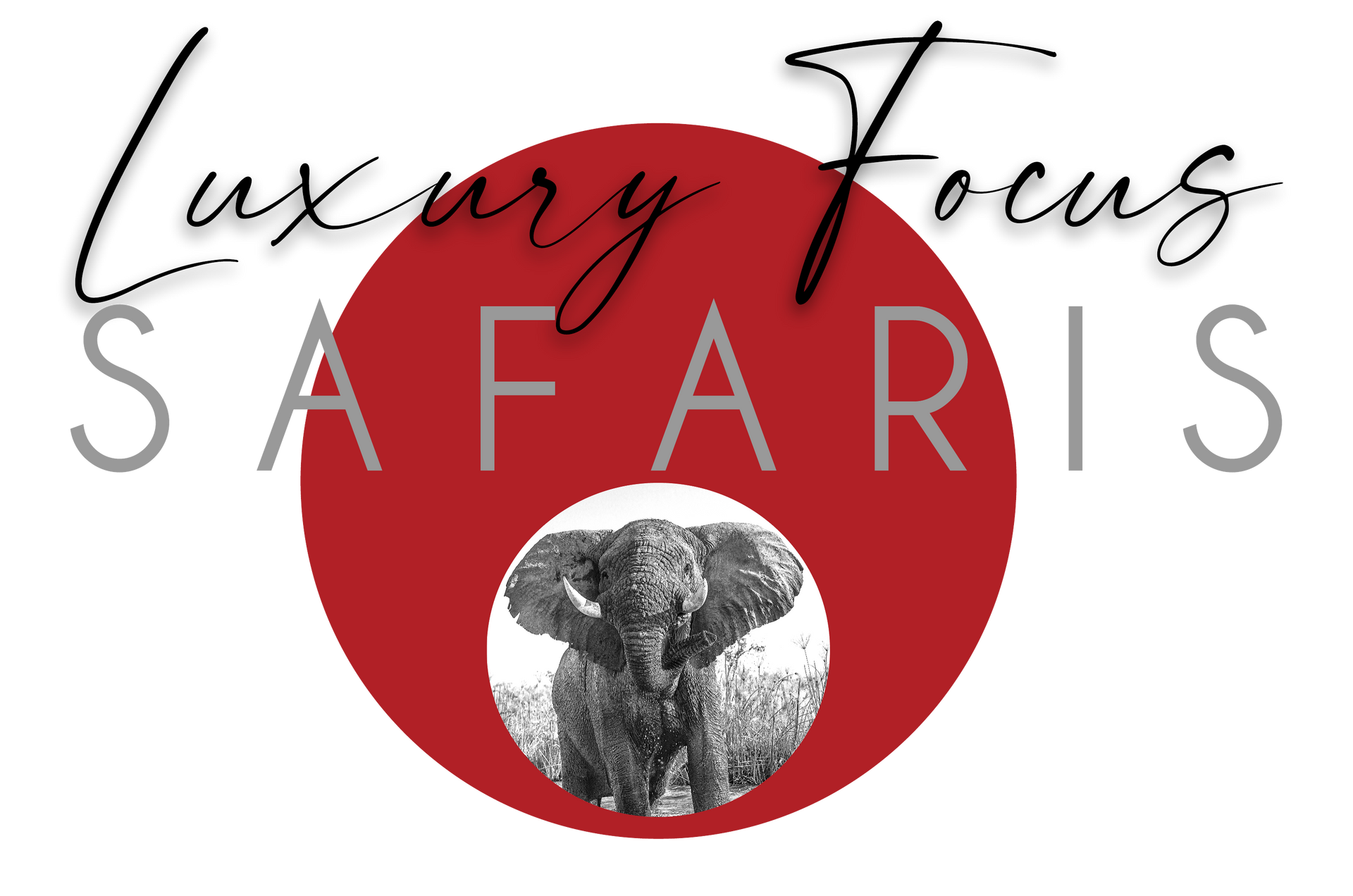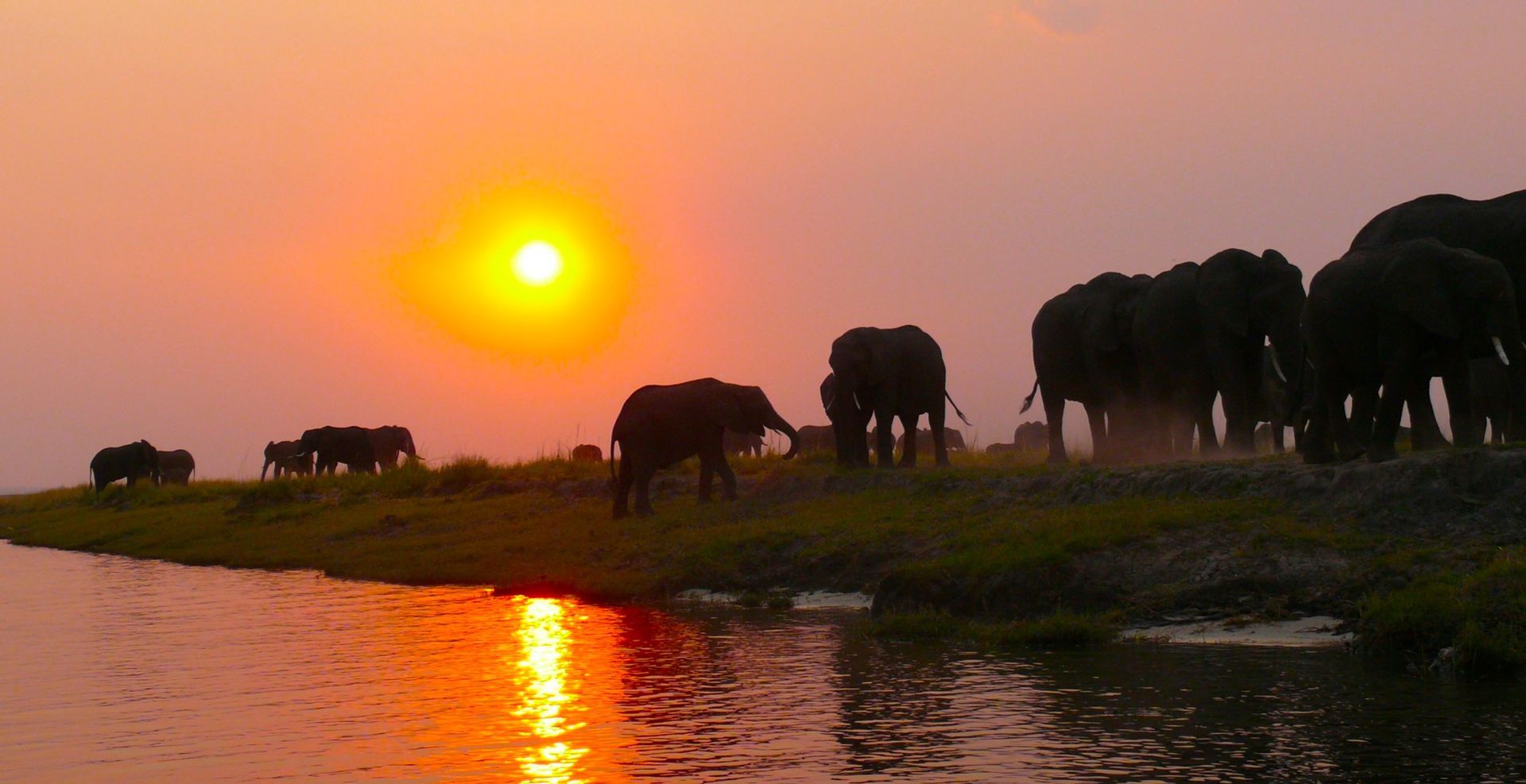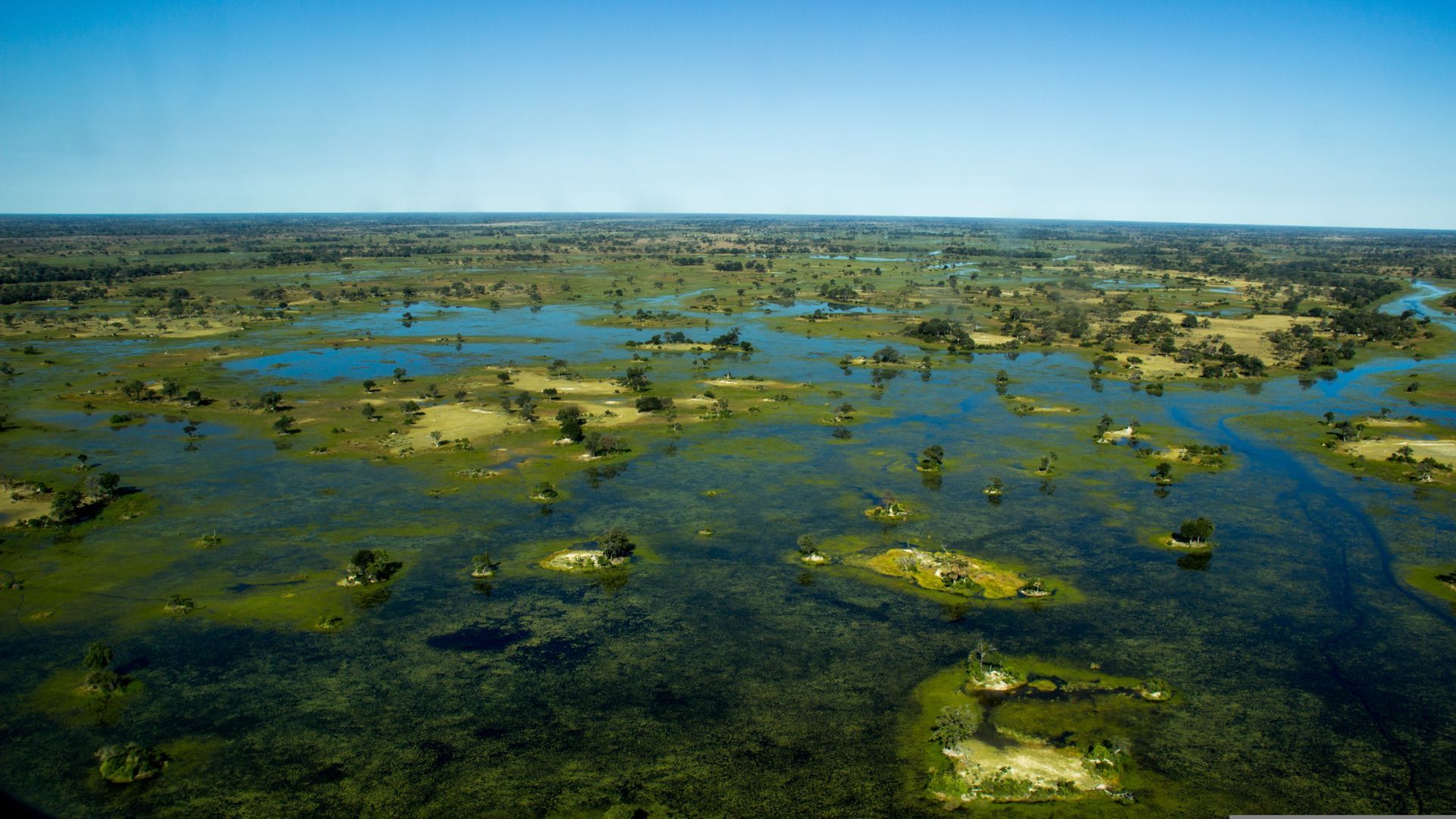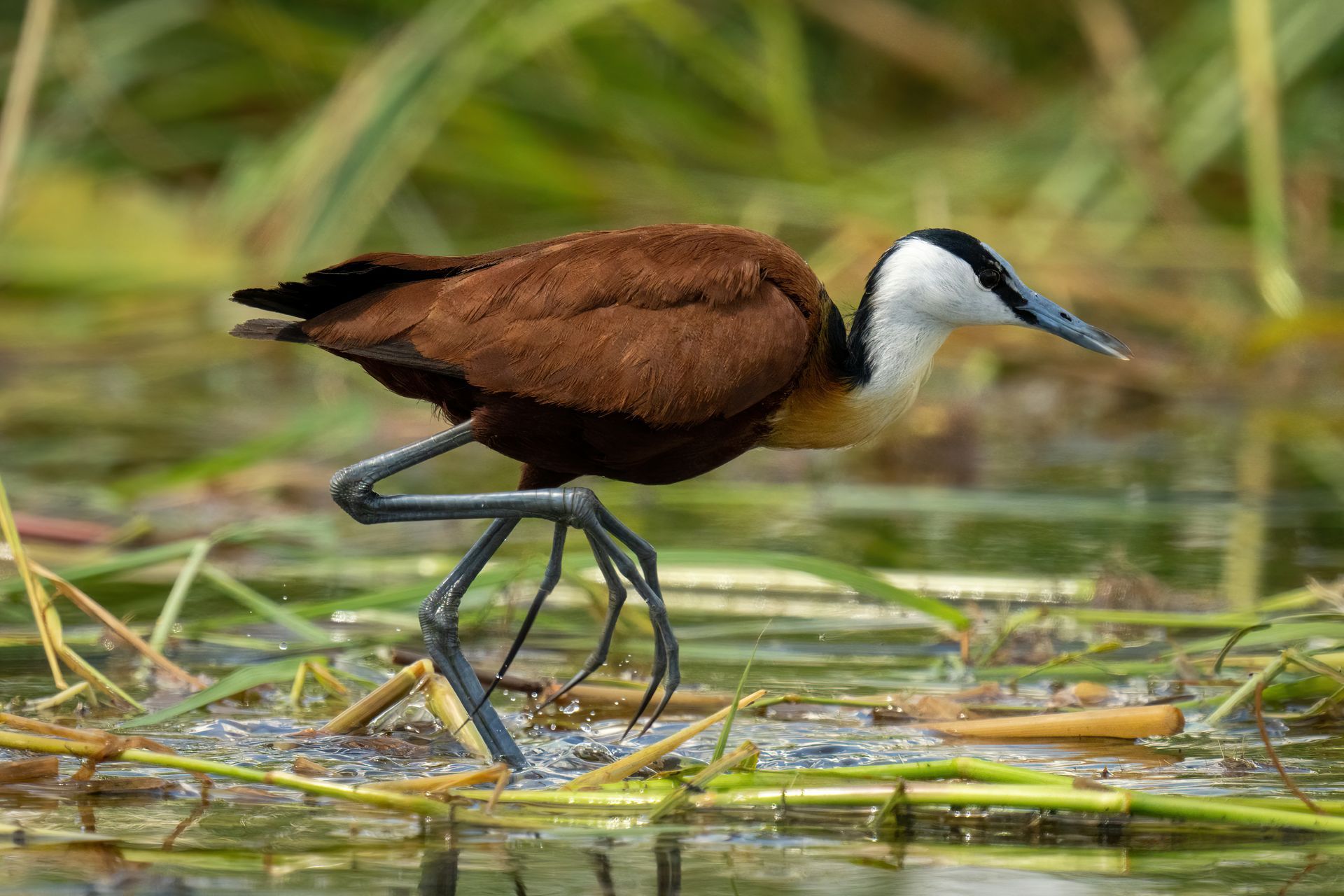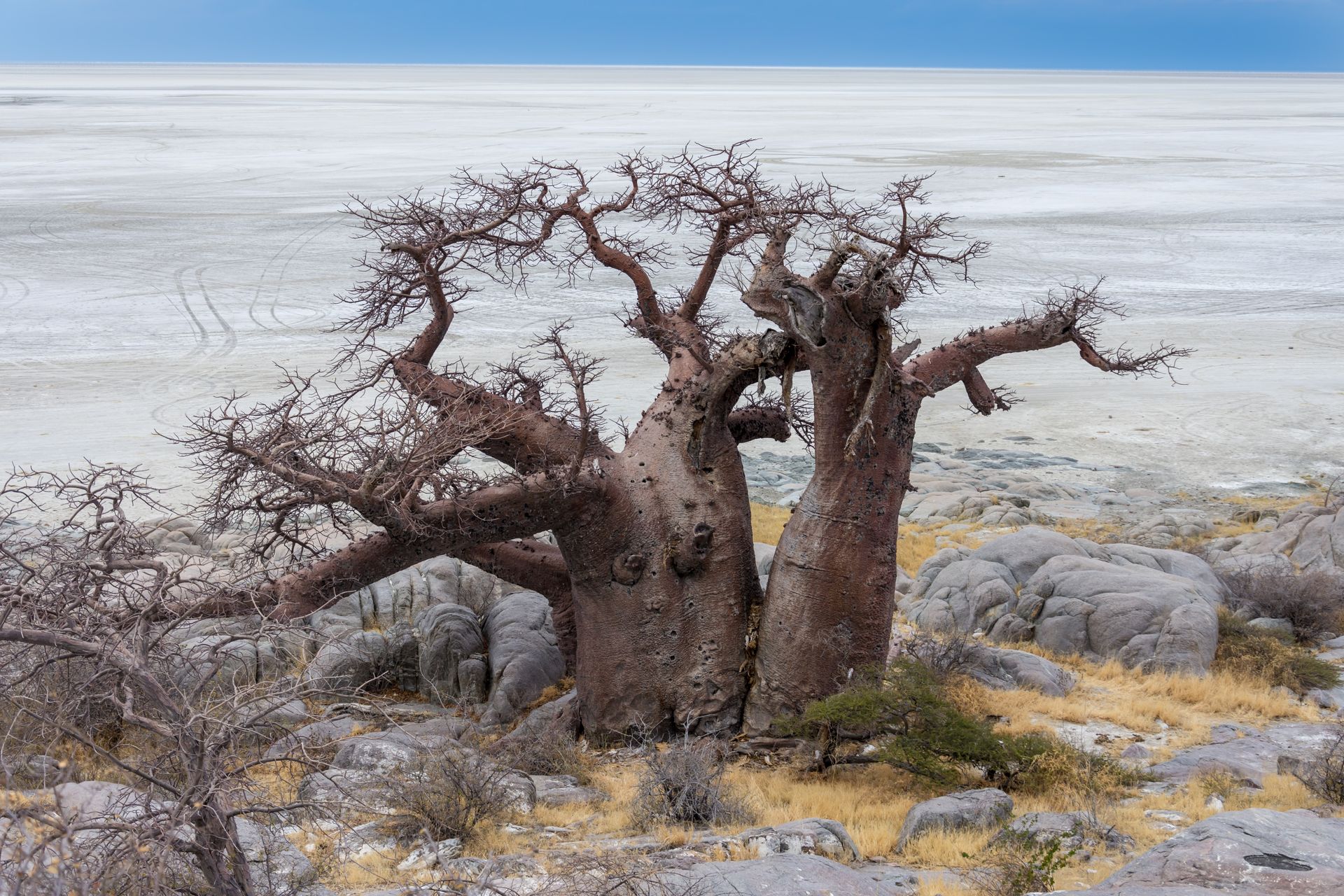The best of Botswana...
Incredible destinations and superlative safari experiences await...
Botswana is a land of untamed beauty and unparalleled wilderness, where vast savannahs, meandering waterways, and shimmering salt pans create a tapestry of natural wonders begging to be explored. Journey with us to this magical Southern African country and immerse yourself in a world where the rhythms of nature dictate the pace of life, and every moment is an adventure waiting to unfold...
The jewel of the Kalahari
The adventure begins in the breathtaking Okavango Delta, a sprawling oasis in the heart of the otherwise arid expanse of the Kalahari Desert. This is where the Okavango River ends a journey that began in the highlands of Angola, emptying its waters every year into the parched landscape, creating a mesmerizing mosaic of channels, lagoons and islands in one of the world's largest inland alluvial fans.
Known as the inundation, this life-giving flood takes place in the peak of the winter months as the dry season takes hold, bringing with it one of the highest concentrations of wildlife in Africa as animals of all description move into the Delta to take advantage of the fresh grazing and browsing this wonderful wetland provides.
The floodwaters mean peak season for safari enthusiasts, drawn here by the phenomenal game viewing and birding and the chance to explore this incredible place in a number of different ways, from traditional game drives and walking safaris to boat-based expeditions, kayaks and dug-out canoes known as mokoros which are poled from the rear by experienced guides.
There is little to beat the sensation of gliding silently through the labyrinthine waterways in a mokoro, experiencing a sensory overload as you watch herds of elephants wading through the shallow channels, with water the colour of clear iced tea lapping gently all around you. Overhead, a kaleidoscope of birdlife fills the sky, from vibrant kingfishers to majestic African fish eagles... This really is safari heaven.
Exploring the Delta's islands on foot offers a more intimate perspective, allowing you to track wildlife through the reed-lined channels and open floodplains. Guided bush walks reveal hidden wonders not often seen from a vehicle or boat and are an absolute must, as are traditional game drives on the larger islands, locating the huge herds of buffalo who take refuge here, often pursued by prides of lion.
Dinners are invariably taken under a canopy of stars, with the sounds of the African night all around you - with melodious frogs, crickets, owls and occasionally the haunting call of a distant hyena or the roar of lion calling to its pride-mates.
Chobe - a northern paradise
While there are only small areas of the Okavango where you can find water all year round, to the north lies a wilderness renowned for its impressive river system, where the waters of the Chobe River meet the mighty Zambezi and life congregates in abundance... This is Chobe National Park, spreading inland from the river that gives it its name and forms a border with neighbouring Namibia, covering ancient swamplands and marshes and featuring a river that changes direction on a regular basis...
Accessed from the border town of Kasane, Chobe is a safari enigma, offering exceptional riverfront adventures from boat-based safaris to luxurious houseboats that cruise the waters, offering multiple-night excursions along this legendary waterway and providing a unique point of view for keen safari enthusiasts. Inland, Chobe encompasses some of the most wildlife-rich regions of Botswana, from the magical Savuti marshlands to the intriguing Selinda Spillway which has been known to change the direction of its flow as it links the Lintanti swamps to the Okavango Delta.
Renowned for its massive herds of elephant and buffalo, Chobe is also a predator haven, being home to leopard, lion and cheetah, as well as large packs of painted wolves (African wild dogs), and lesser-known predators like caracal, serval and African wild cats. For birders Chobe is outstanding, especially along the river and on its various islands which are used as nesting sites by yellow-billed storks and other species of waterfowl like the African jacana. The air is also filled with birds of prey like the African fish eagle, osprey and white-backed vulture, and colourful species like the southern carmine bee-eater, little bee-eater, African skimmer and saddle-billed stork.
Along the riverbanks crocodiles bask in the sun, their prehistoric forms blending seamlessly with the shoreline, and hippos take up residence in the shallows, emerging at dusk to graze on the open floodplains. On land, Chobe National Park offers equally impressive game viewing opportunities.
Game drives through the park's savannah plains reveal a wealth of wildlife, with huge herds of plains game like zebra and wildebeest, as well as red lechwe, sable, kudu and giraffe. The Savuti Marsh area, in particular, is renowned for its predator sightings, with lions and hyenas vying for dominance amidst the rugged terrain.
The sunsets here are spectacular, especially from the river, and sundowner cruises from your lodge or houseboat are therefore highly recommended. Chobe is also a photographer's paradise and the perfect place to flex your lens and hone your photographic skills.
An ancient land revealed
Continuing eastward from Chobe brings you to the jaw-dropping beauty of the Makgadikgadi Pans National Park, a vast expanse of shimmering salt pans that stretch as far as the eye can see. Once part of an ancient super lake that covered much of southern Africa, the Makgadikgadi Pans are a testament to the ever-changing nature of the African landscape.
The Makgadikgadi Pans were formed thousands of years ago when a vast inland lake, known as Lake Makgadikgadi, began to dry up due to geological shifts and changes in climate. Today, the pans consist of a series of interconnected salt flats, including Sowa, Nwetwe, and Nxai Pans, among others.
Sowa Pan is the largest of the Makgadikgadi Pans and is located near the town of Sowa. It is known for its vast expanse of white salt crust, which stretches to the horizon in all directions. The pan is also home to the Sowa Saltworks, where salt is harvested for commercial use.
Nwetwe Pan is situated to the southwest of Sowa Pan and is characterized by its stark, lunar-like landscape. It is surrounded by grasslands and shrublands, which provide important habitat for wildlife, particularly during the wet season when temporary water sources form on the pan.
Nxai Pan National Park encompasses a portion of the Makgadikgadi Pans, including Nxai Pan itself and the surrounding grasslands. The park is known for its iconic baobab trees, which dot the landscape, as well as its resident wildlife, including zebras, wildebeests, giraffes, and predators such as lions and cheetahs.
Exploring the salt pans is an otherworldly experience, as the stark white plains stretch to the horizon, broken only by the occasional silhouette of a rocky outcrop bedecked in ancient baobab trees. Here, time seems to stand still, and the vastness of the landscape inspires a sense of awe and wonder. In the dry season between May and October you can venture out onto the salt pans on quad bikes, traversing the surreal terrain on four wheels, stopping to marvel at the natural beauty that surrounds you.
The Makgadikgadi is also home to a spectacular zebra and wildebeest migration every year as huge herds of these animals move across the pans in search of fresh grazing, invariably followed by predators like lions and cheetah. Along the edges of the pans, you'll find meerkat colonies and brown hyenas.
In addition to its natural wonders, Makgadikgadi National Park is also home to ancient archaeological sites, including the historic baobab tree known as Baines' Baobab, a former landmark for early explorers, and the awe-inspiring Kubu Island which has been used as a campsite for thousands of years by this land's original human inhabitants - the San bushmen. As you explore these historic sites and learn about the rich cultural heritage of the region, you gain a deeper appreciation for the interconnectedness of the past and present in this timeless land.
The landscape of the Makgadikgadi Pans undergoes dramatic changes throughout the year, depending on seasonal rainfall patterns. During the wet season (typically from November to April), temporary water sources form on the pans, attracting wildlife and supporting lush vegetation. However, during the dry season (from May to October), the pans become parched and desolate, with little to no vegetation and wildlife dispersed to other areas.
Overall, the Makgadikgadi Pans offer a truly unique and captivating experience for travelers seeking to explore the remote and untouched beauty of Botswana's wilderness. From the vast expanse of salt flats to the abundant wildlife and rich cultural heritage, the pans are a testament to the resilience of nature and the enduring spirit of exploration.
Want to go to Botswana? Talk to us about putting together an itinerary that includes these three great destinations!

